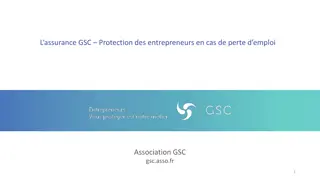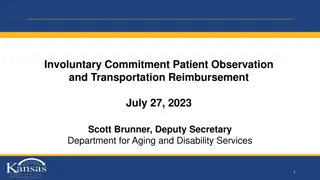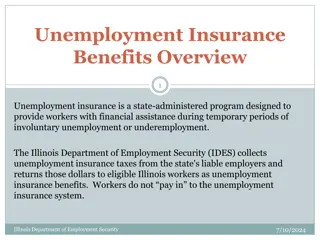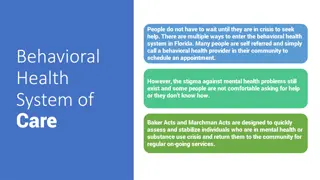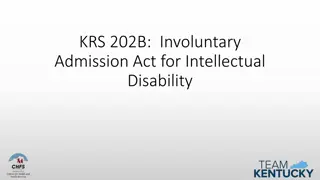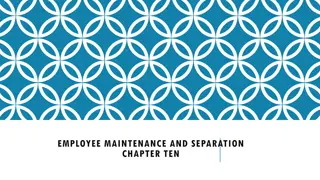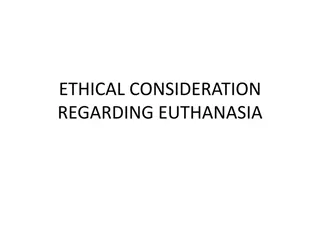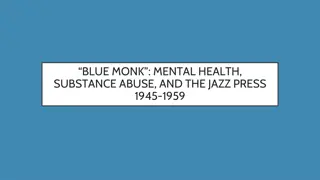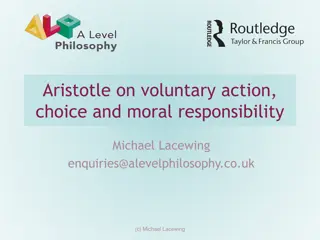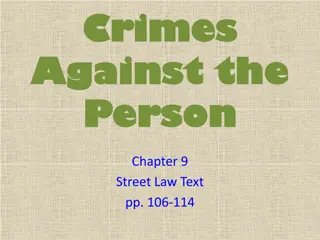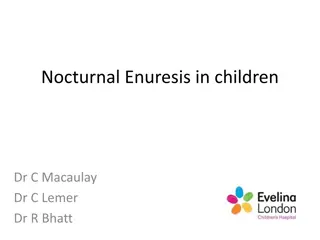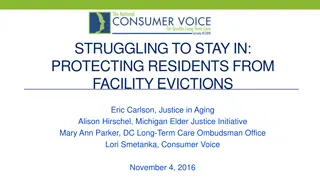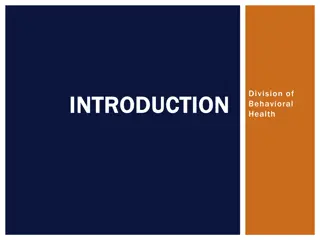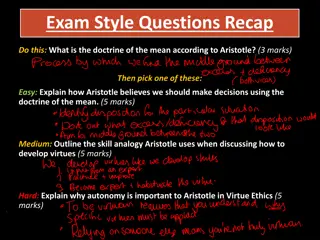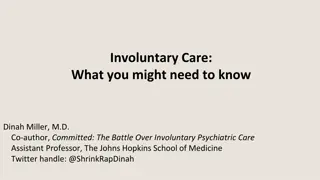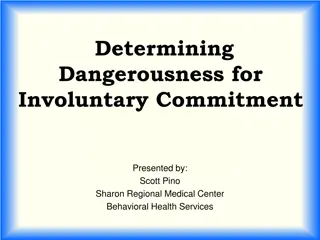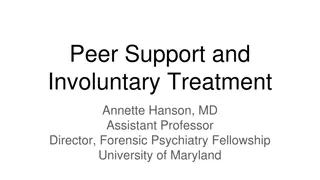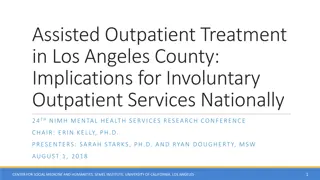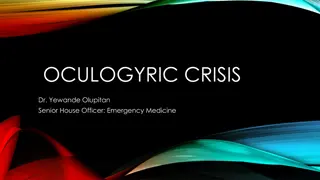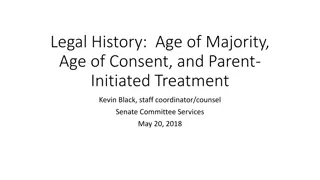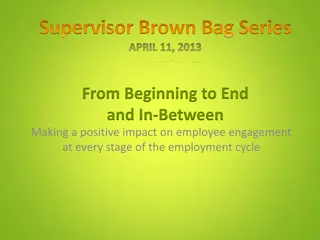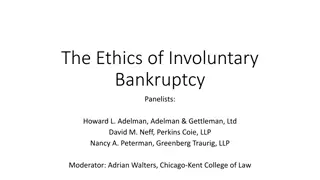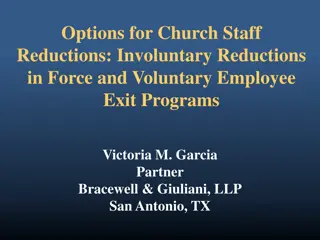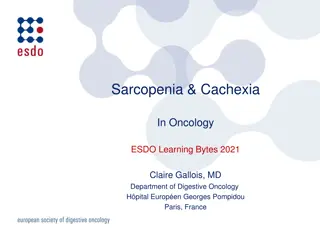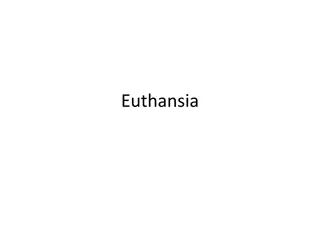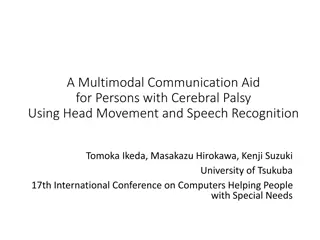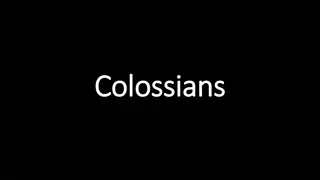Understanding GSC Employment Loss Insurance for Entrepreneurs
Explore the importance of employment loss insurance for entrepreneurs, the limited coverage provided by existing systems, and the benefits of GSC's specialized protection for business leaders facing involuntary job loss. Discover key insights from the Employment Observatory for Entrepreneurs and det
2 views • 14 slides
Mainstreaming Human Mobility in National Adaptation Plans for Climate Resilience
Addressing human mobility-related challenges and opportunities in the context of climate change is crucial for avert, minimize, and address climate-induced displacement and involuntary mobility. This supplement provides a step-by-step guide to mainstream human mobility into National Adaptation Plans
3 views • 19 slides
Understanding the Nervous System: CNS, PNS, SNS, and ANS
The nervous system comprises the Central Nervous System (CNS) and Peripheral Nervous System (PNS), with the PNS further divided into the Somatic Nervous System (SNS) and Autonomic Nervous System (ANS). The SNS controls voluntary movements of skeletal muscles, while the ANS regulates involuntary proc
2 views • 23 slides
Reimbursement Process for Involuntary Commitment Patient Observation
HB 2184 directs KDADS to reimburse healthcare providers, law enforcement, and county entities for unpaid costs related to patient observation and transportation from July 1, 2023, to June 30, 2024. The process involves registering in SMART, collecting reimbursement requests, and verifying them again
0 views • 12 slides
Illinois Unemployment Insurance Benefits Overview
Illinois Unemployment Insurance program provides financial assistance to eligible workers during periods of involuntary unemployment or underemployment. Eligibility requirements, benefit amounts, filing procedures, and schedules are outlined by the Illinois Department of Employment Security to help
0 views • 19 slides
Behavioral Health System in Florida: Access and Support Overview
Florida's behavioral health system offers multiple ways for individuals to seek help, whether through self-referral or crisis intervention programs like the Baker Act and Marchman Act. Services range from adult mental health treatment facilities to children's mental health promotion programs. Depart
0 views • 14 slides
Understanding Kentucky's KRS.202B Involuntary Admission Act for Intellectual Disability
Kentucky's KRS.202B allows for the involuntary admission of individuals with intellectual disabilities to Intermediate Care Facilities for Individuals with Intellectual Disability (ICF/IID). The process involves filing a petition in district court, evaluation by two certified evaluators, and coordin
0 views • 25 slides
Understanding Employee Maintenance and Separation
Employee maintenance involves actions like transfers and promotions, which facilitate career development and job satisfaction. Separation, on the other hand, marks the end of an employee's tenure in an organization and can be voluntary or involuntary. Voluntary separations can be avoidable or unavoi
1 views • 22 slides
Understanding the Histological Structure of Muscle Cells
This presentation delves into the histological structure of three types of muscle cells - skeletal, cardiac, and smooth muscles. Learn about their differences, such as striation, voluntary vs. involuntary control, and cellular organization. Discover the components of muscular tissue, the coverings o
0 views • 13 slides
Understanding the Ethical Considerations of Euthanasia
Euthanasia, derived from Greek meaning "good death," is a complex ethical issue involving the intentional ending of a patient's life to alleviate suffering in terminal conditions. It differs from suicide, as euthanasia may be voluntary, non-voluntary, or involuntary. Considerations about the nature
0 views • 23 slides
The Impact of Mental Health on Jazz Legend Thelonious Monk
Thelonious Monk, a jazz icon, faced struggles with mental health, including an involuntary hospitalization and a misdiagnosis of paranoid schizophrenia. Later diagnosed with bipolar disorder, his symptoms affected his music career and personal life, highlighting the intersection of creativity and me
0 views • 6 slides
Understanding Disposition of Assets for Less Than Fair Market Value in Affordable Housing
In affordable housing, applicants are required to disclose if any family member disposed of assets for less than fair market value within two years of certification or recertification. This requirement, mandated by HUD, aims to prevent asset divestment for housing eligibility. Involuntary dispositio
0 views • 8 slides
Understanding Aristotle's Views on Voluntary Action and Moral Responsibility
Aristotle's perspective on voluntary actions emphasizes the distinction between voluntary and involuntary actions, exploring the role of force, ignorance, and choice in moral responsibility. He discusses how actions stemming from desire or emotion are still considered voluntary, while highlighting t
0 views • 12 slides
Understanding Crimes Against the Person: A Comprehensive Overview
Crimes against the person, including homicide, kidnapping, assault, battery, and sexual assault, are among the most serious offenses. These crimes are categorized by their levels of seriousness and intent, such as criminal and non-criminal homicide. Murder, differentiated into first and second-degre
2 views • 19 slides
Comprehensive Guide to Nocturnal Enuresis in Children: Assessment, Management, and Red Flags
Involuntary bedwetting in children, known as nocturnal enuresis, is not uncommon and can impact self-esteem. Understanding the incidence, assessment, red flags, and management options is crucial for effective treatment. History taking, examination, and planning management strategies tailored to the
0 views • 13 slides
Understanding Involuntary Discharges in Long-Term Care Facilities
Studies show adverse effects on residents forced to leave care facilities involuntarily, leading to increased morbidity and loss of familiar support systems. Lack of representation exacerbates the problem, emphasizing the need for advocacy and awareness. Recent changes in regulations aim to address
3 views • 30 slides
Understanding Involuntary Commitment Criteria for Adults with Serious Mental Illness
Involuntary commitment for adults with serious mental illness is a sensitive issue that involves specific criteria to determine if someone poses a danger to themselves or others. The criteria include having a serious mental illness, being a threat to self or others, or having an inability to provide
0 views • 67 slides
Understanding Criminal Homicide and Its Classifications
Considered a crime against the person, criminal homicide encompasses various degrees including first-degree murder, second-degree murder, manslaughter, involuntary manslaughter, and negligent homicide. Each degree is characterized by specific elements such as premeditation, malice, intent, and reckl
0 views • 8 slides
Understanding Reflexes: A Quick Guide to How They Work
Reflexes are rapid, involuntary responses that help protect our body from harm. They bypass the brain for speedy reactions, such as pulling away from a hot surface. This guide explains the reflex arc process and why reflexes are vital for our safety.
0 views • 10 slides
Understanding Aristotle's Doctrine of the Mean and Voluntary Actions
Explore Aristotle's doctrine of the mean, the skill analogy used in developing virtues, the importance of autonomy in virtue ethics, and the distinction between voluntary and involuntary actions in moral responsibility as discussed in his Nicomachean Ethics.
0 views • 22 slides
Understanding the Battle Over Involuntary Psychiatric Care
Explore the complexities surrounding involuntary psychiatric care, including standards for commitment, patient rights, and differing perspectives from organizations like The Treatment Advocacy Center, NAMI, and The American Psychiatric Association.
0 views • 38 slides
Understanding Involuntary Manslaughter: Forms and Elements
Involuntary Manslaughter encompasses two forms: Manslaughter by Unlawful and Dangerous Act and Gross Negligence Manslaughter. The former requires an unlawful act causing death, while the latter involves gross negligence leading to a fatality. Acts must be both unlawful and dangerous to constitute th
0 views • 29 slides
Understanding Mental Health Procedures for Involuntary Commitment
The Mental Health Procedures Act, enacted in 1976 and amended in 1978, provides guidelines for the treatment of individuals with mental illness, emphasizing voluntary treatment over involuntary. It outlines criteria, such as evidence of severe mental illness and dangerous behavior, for pursuing invo
0 views • 32 slides
Evolution of Involuntary Treatment in Mental Health Care
The evolution of involuntary treatment in mental health care spans from the 18th and 19th centuries marked by social reform efforts to present-day practices with common elements across states. Notable figures like Dorothea Dix and Mrs. E. P. W. Packard contributed to raising awareness and improving
0 views • 21 slides
Assisted Outpatient Treatment in Los Angeles County: Implications for National Services
The symposium discusses Assisted Outpatient Treatment (AOT) in Los Angeles County, exploring topics such as family involvement, barriers, voluntary vs. involuntary enrollment, violence, and victimization. Presenters highlight the importance of addressing inadequate access to mental health care and p
0 views • 80 slides
Understanding Oculogyric Crisis: Symptoms, Causes, and Management
Oculogyric crisis is a rare but potentially serious condition characterized by sudden, involuntary movements of the eyes. It is often drug-induced and affects individuals differently. Symptoms can range from mild discomfort to severe distress, and prompt medical attention is crucial for proper diagn
0 views • 17 slides
Understanding Legal History: Age of Majority & Consent in Behavioral Health
Explore the significance of the age of majority, age of consent, and parent-initiated treatment in behavioral health settings. Learn about the distinctions and implications of these legal concepts on treatment decisions for minors, voluntary/involuntary status triggers, due process rights, and paren
0 views • 30 slides
Enhancing Employee Engagement and Managing Separations Effectively
Understanding employee engagement levels is crucial for organizational success. Engaged employees drive innovation and productivity, while actively disengaged employees can undermine the efforts of their colleagues. Effective management of separations, whether voluntary or involuntary, is also essen
0 views • 15 slides
Ethical Considerations in Involuntary Bankruptcy Cases
This content discusses three scenarios involving ethical dilemmas in the context of involuntary bankruptcy filings. From managers filing against fellow LLC members to lenders initiating bankruptcies for strategic reasons, the scenarios highlight complex issues such as creditor solicitation, usury de
0 views • 6 slides
Effective Strategies for Church Staff Reductions: Involuntary and Voluntary Options
Explore effective strategies for church staff reductions, including involuntary reductions in force and voluntary employee exit programs. Learn about salary freezes, attrition reductions, and reduced work schedules/furloughs to navigate challenging situations while ensuring compliance with employmen
0 views • 36 slides
Understanding Sarcopenia and Cachexia in Oncology
Sarcopenia and cachexia are prevalent issues in oncology, leading to muscle wasting, involuntary weight loss, and functional impairment. These conditions have various causes such as low energy intake, tumor treatments, inflammation, malnutrition, and infections. They can result in decreased quality
0 views • 11 slides
Achieving Universal Health Coverage Through Ghanaian National Insurance Scheme
The Ghanaian National Insurance Scheme aims to achieve universal health coverage by ensuring affordable healthcare regardless of ability to pay. The scheme focuses on equity in healthcare financing, emphasizing both horizontal and vertical equity. Policy makers justify the link between healthcare pa
0 views • 23 slides
Understanding Euthanasia: Terminology, Types, and Controversies
Euthanasia encompasses various forms such as voluntary, involuntary, active, passive, and physician-assisted suicide, each raising ethical and legal dilemmas. Terminology and definitions related to euthanasia are crucial in understanding the complexities and debates surrounding end-of-life decisions
0 views • 10 slides
Assistive Communication System for Individuals with Cerebral Palsy Using Head Movement and Speech Recognition
Development of a multimodal communication aid system for individuals with cerebral palsy, addressing challenges such as dysarthria and involuntary movements. The system allows users to communicate through head movements and speech recognition, reducing the reliance on caregivers and minimizing disru
0 views • 15 slides
Unemployment Protection for Self-Employed in Belgium
Belgium has implemented various mechanisms to provide unemployment protection for self-employed individuals, including the Bridging Right Scheme and Crisis Bridging Right. Recent reforms aim to address low take-up rates and complex eligibility conditions, offering more flexible rules. The Bridging R
0 views • 9 slides
Furloughs, Voluntary Outs, and RIFs in Human Capital Management
Furloughs are the involuntary leave without pay of classified or unclassified employees to reduce costs or cope with temporary work declines. Appointing Authorities can implement furloughs for up to 184 hours in a 12-month period, with specified procedures and reasons for non-uniform treatment. Furl
0 views • 36 slides
Understanding Involuntary and Voluntary Movements in the Body
Involuntary movements, such as contraction and relaxation, are controlled by the autonomic nervous system and are essential for daily functions like heartbeat regulation. On the other hand, voluntary movements involve conscious control over skeletal muscles to regulate body movement. Biblical verses
1 views • 54 slides
